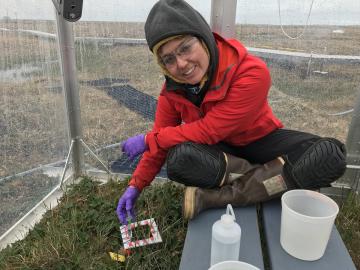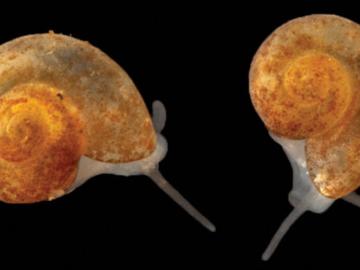
Filter News
Area of Research
- Advanced Manufacturing (2)
- Biological Systems (1)
- Biology and Environment (120)
- Biology and Soft Matter (1)
- Computational Biology (2)
- Computational Engineering (2)
- Computer Science (1)
- Energy Science (82)
- Fusion and Fission (10)
- Fusion Energy (8)
- Isotopes (8)
- Materials (45)
- Materials for Computing (8)
- Mathematics (1)
- National Security (21)
- Neutron Science (24)
- Nuclear Science and Technology (13)
- Nuclear Systems Modeling, Simulation and Validation (1)
- Sensors and Controls (1)
- Supercomputing (77)
News Type
News Topics
- (-) Advanced Reactors (37)
- (-) Biomedical (70)
- (-) Biotechnology (38)
- (-) Environment (202)
- (-) Frontier (61)
- (-) Mathematics (11)
- (-) Polymers (31)
- (-) Security (29)
- 3-D Printing/Advanced Manufacturing (137)
- Artificial Intelligence (127)
- Big Data (70)
- Bioenergy (109)
- Biology (126)
- Buildings (65)
- Chemical Sciences (83)
- Clean Water (32)
- Composites (33)
- Computer Science (216)
- Coronavirus (47)
- Critical Materials (28)
- Cybersecurity (34)
- Education (5)
- Element Discovery (1)
- Emergency (4)
- Energy Storage (107)
- Exascale Computing (65)
- Fossil Energy (8)
- Fusion (63)
- Grid (70)
- High-Performance Computing (125)
- Hydropower (12)
- Irradiation (2)
- Isotopes (58)
- ITER (9)
- Machine Learning (64)
- Materials (147)
- Materials Science (145)
- Mercury (12)
- Microelectronics (4)
- Microscopy (51)
- Molten Salt (10)
- Nanotechnology (58)
- National Security (81)
- Neutron Science (163)
- Nuclear Energy (113)
- Partnerships (68)
- Physics (64)
- Quantum Computing (52)
- Quantum Science (90)
- Simulation (61)
- Software (1)
- Space Exploration (26)
- Statistics (4)
- Summit (70)
- Transportation (92)
Media Contacts

Scientists have tapped the immense power of the Summit supercomputer at Oak Ridge National Laboratory to comb through millions of medical journal articles to identify potential vaccines, drugs and effective measures that could suppress or stop the
An international team of scientists found that rules governing plant growth hold true even at the edges of the world in the Arctic tundra.

Oak Ridge National Laboratory researchers have developed a thin film, highly conductive solid-state electrolyte made of a polymer and ceramic-based composite for lithium metal batteries.

Researchers at the Department of Energy’s Oak Ridge National Laboratory are refining their design of a 3D-printed nuclear reactor core, scaling up the additive manufacturing process necessary to build it, and developing methods

In the 1960s, Oak Ridge National Laboratory's four-year Molten Salt Reactor Experiment tested the viability of liquid fuel reactors for commercial power generation. Results from that historic experiment recently became the basis for the first-ever molten salt reactor benchmark.

OAK RIDGE, Tenn., May 5, 2020 — By 2050, the United States will likely be exposed to a larger number of extreme climate events, including more frequent heat waves, longer droughts and more intense floods, which can lead to greater risks for human health, ecosystem stability and regional economies.

While some of her earth system modeling colleagues at ORNL face challenges such as processor allocation or debugging code, Verity Salmon prepares for mosquito swarms and the possibility of grizzly bears.

In the race to identify solutions to the COVID-19 pandemic, researchers at the Department of Energy’s Oak Ridge National Laboratory are joining the fight by applying expertise in computational science, advanced manufacturing, data science and neutron science.

Sometimes conducting big science means discovering a species not much larger than a grain of sand.

A software package, 10 years in the making, that can predict the behavior of nuclear reactors’ cores with stunning accuracy has been licensed commercially for the first time.


